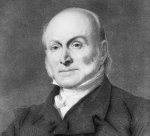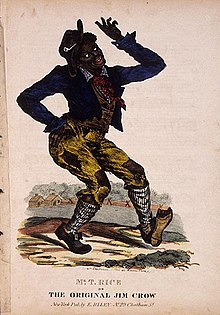 [Note: 2020 has rapidly become a “Year of Discontent” in the United States. The coronavirus–and our government’s seeming inability, or unwillingness, to bring it under control–has produced much of the pervasive anger and frustration currently testing the strengths of the American social contract.
[Note: 2020 has rapidly become a “Year of Discontent” in the United States. The coronavirus–and our government’s seeming inability, or unwillingness, to bring it under control–has produced much of the pervasive anger and frustration currently testing the strengths of the American social contract.
But there are other strands contributing to the current gloomy atmosphere–political, economic, social, and cultural. One of the bitterest of these has been the latest flareup over the continuing legacy of racism in this nation, its roots in our history, and the best way(s) forward in light of it. I’ve been studying and teaching about the intersection of race and history in the United States for over half a century now, so I take this personally.]
* * * * *
As I was growing up, I lived through landmark developments in race relations and civil rights, including the Supreme Court’s epochal Brown decision in 1954, the Montgomery Bus Boycott, the Civil Rights Act of 1964, the Voting Rights Act of 1965, and the assassination of the Rev. Dr. Martin Luther King, Jr. in 1968. The televised coverage of these events helped determine the way I viewed the world and, once I began to teach American History, shaped the emphasis I placed on the significance of southern and African American history in the nation’s past.
A decade before I retired, I inherited a one-semester course in the History of the Civil Rights Movement; the need to revise and restructure it led me to rethink the parameters of the story. A key decision I made was to devote considerable time to the precursor of the Movement, the so-called “Age of Jim Crow.” I felt that, unless I considered in some detail the period that established the “ground rules” for the post-Reconstruction world of African Americans living in the South (and in much of the rest of the country), my students would not receive a well-rounded picture of what the twentieth-century Civil Rights Movement had achieved. Without a knowledge of Jim Crow America and its tentacles on the nation’s African American citizens, the triumphs of the King era might have seemed inevitable.
So, I immersed myself in a study of the origins of the Jim Crow South. The result was a series of lectures I used throughout the Civil Rights course–and in my Advanced Placement U.S. History survey–to provide context for the material provided in texts, supplementary readings, and videos. This interest in the Jim Crow era accompanied me into retirement.
* * * * *
Since leaving the classroom, I have continued to “do history,” primarily through this blog. Look at the top of this page; under the picture, you’ll see links to various “pages,” each of which organizes relevant posts topically. One of them is “The South/Civil Rights.” Click on that link and you’ll find a list of more than thirty posts. Scan this list; notice how many of the posts are related, not to the Antebellum South, the Civil War and Reconstruction, or the modern South of the Civil Rights Movement, but to the Jim Crow years.
Reviewing this page recently, I realized that the lectures I created to supplement material assigned in the Civil Rights and AP U.S. History courses provide a concise overview of the road from the end of Reconstruction through the early twentieth century, AKA “the Age of Jim Crow.” In this seminal period are buried the origins of issues that still roil our society, politics, and culture.
* * * * *
Below are links to those posts, along with a brief description of each. I have appended a list of suggested readings to each essay:
The New South: Myth and Reality–a sketch of the economic and social worldview of a group of influential Southern journalists and promoters after the end of the Civil War, whose ideas amounted to a contract, whereby southern whites would allow their states to be made over in the image of the victorious North, if they were permitted to handle race relations themselves. This post also mentions the origins of an important cultural adjunct to the “New South Creed,” the Lost Cause, which remains a controversial trope in our current wrestling match with the legacy of the Jim Crow period (see, for example, here and here).
The Road to Jim Crow, Part 1 and Part 2–I used to tell my students, when teaching about the Jim Crow Era, that what happened then was nothing less than that the South, defeated on the battlefields, actually “won the Civil War” by the end of the nineteenth century. These posts, along with the intellectual framework provided by the “New South Creed,” help explain why that occurred.
The Age of Jim Crow–life in the Jim Crow South as lived by African American and white southerners. I draw heavily here on the late Leon F. Litwack’s fine study, Trouble in Mind: Black Southerners in the Age of Jim Crow. (For important supplementary information, see Litwack’s Been in the Storm So Long: The Aftermath of Slavery.)
The South/Civil Rights page also includes a concise treatment of the modern Civil Rights Movement through 1968, as the “Second Reconstruction,” Part 1 and Part 2.
Finally, for a look at a peculiar feature of the course I offered on the history of the modern Civil Rights Movement, go here.
* * * * *
Since I published the posts listed above, I have read–and listened to and watched– different approaches to the Age of Jim Crow and its legacies. Here are a few recent sources that I’ve found helpful:
“For Faith: Monuments and Symbols”–this podcast features the Bishop of the Episcopal Diocese of Atlanta, The Rev. Robert Wright, and Sheffield Hale, President and CEO of the Atlanta History Center, discussing Confederate monuments and their significance.
A Deeper South–This site is the creation of Pete Candler, an Asheville, NC-based writer and photographer who explains his idea of “a deeper South” this way:
The vision of A Deeper South is rooted in the idea that the spiritual, political, and cultural health of a nation, region, city, town, or person depends upon an honest and unflinching memory; that the gravest danger to our cities and ourselves is a willful amnesia; that hope is to be found through the work of active remembrance, putting back together the fragments of personhood scattered by a culture of selective memory.
A Deeper South features stories, short films, podcasts, and, of late, Zoom interviews with guests who, like Mr. Candler, are interested in both the South of memory and, more importantly, why we remember it the way we do. (Candler lays out his views on this “Deeper South” in more detail in an engrossing essay in the Los Angeles Review of Books.)
And, finally, a shout out to Dr. Heather Cox Richardson, professor of History at Boston College, whose nine-part video series on YouTube, “The American Paradox,” is based on her recent book, How the South Won the Civil War. (It’s always heartening when one encounters a younger historian who shares his sometimes weird ideas of what makes the historical world go round!)
* * * * * *
For those interested in reading more of my reflections on history, here are links to my books on the subject:
 Rancorous Enmities and Blind Partialities: Parties and Factions in Georgia, 1807-1845 (University Press of America, 2015)
Rancorous Enmities and Blind Partialities: Parties and Factions in Georgia, 1807-1845 (University Press of America, 2015)
In Pursuit of Dead Georgians: One Historian’s Excursions into the History of His Adopted State (iUniverse, 2015)










George, I followed up on the link to your article about teaching Civil Rights history backwards. It’s a great idea, maybe worth pushing in the educational reform space. I tried something like that with 8th graders, outlined on my blog. I keyed each quarter of the year to a question raised by the last phrases in the Pledge of Allegiance, started from the present time, then re-traced 500 years of US history each quarter. I thought it was brilliant; kids mostly shrugged and asked what would be on the final. Ah, well. Here’s my article about that: https://smootpage.blogspot.com/2017/07/teach-us-history-with-pledge-of.html
Thanks, Scott. I was leery at first, but my class responded really well to it, and both their teacher and his students learned a lot! Thanks for the comment.
Scott, I took your advice and visited your website to review the approach you developed around the wording of the Pledge of Allegiance. It was a beaut! Did you, perchance, open discussion of the Pledge with asking what exactly “allegiance” means, and how we’re to ensure that Americans do indeed “pledge allegiance to the United States of America”? I can see my juniors and seniors eating that question alive, but, eighth graders, maybe not so much. But, seriously, I loved your outline of the approach, quarter by quarter, and I think it would be a good approach almost anywhere. Congratulations!
Boss,
I for one vote you tenure! As usual, I admire your ongoing scholarship.
RB
Tenure! Tenure! Thanks, Rick! Oh, wait, I’ve been retired from the Big W. (But Not Shy!) for over a decade. As Maxwell Smart used to say, “I appreciate your confidence, Chief!”